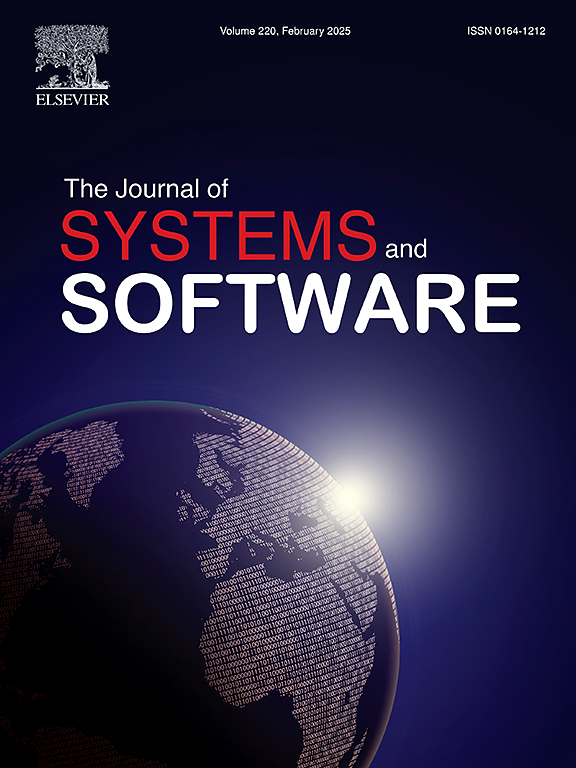Engineering patterns for Trust and Safety on social media platforms: A case study of Mastodon and Diaspora
IF 3.7
2区 计算机科学
Q1 COMPUTER SCIENCE, SOFTWARE ENGINEERING
引用次数: 0
Abstract
Context:
Trust & Safety (T&S) Engineering is an emerging area of software engineering that mitigates the risks of harmful interactions in online platforms. Numerous studies have explored T&S risks on social media platforms, taxonomizing threats and investigating individual issues. However, there is limited empirical knowledge about engineering efforts to promote T&S.
Methods:
This study examines T&S risks and the engineering patterns to resolve them. We conducted a case study of the two largest decentralized SMPs: Mastodon and Diaspora. These SMPs are open-source, so we analyzed T&S discussions within 60 GitHub issues. We analyzed T&S discussions that took place in their online repository and extracted T&S risks, T&S engineering patterns, and resolution rationales considered by the engineers. We integrate our findings by mapping T&S engineering patterns onto a general model of SMPs, to give SMP engineers a systematic understanding of their T&S risk treatment options.
Results:
T&S issues are a challenge throughout the feature set and lifespan of an SMP. A taxonomy of 12 solution patterns are developed, paving the way for academia and industry to standardize Trust & Safety solutions. We conclude with future directions to study and improve T&S Engineering, spanning software design, decision-making, and validation. We conclude with future directions to study and improve T&S Engineering, spanning software design, decision-making, and validation.
社交媒体平台上信任和安全的工程模式:乳齿象和散居的案例研究
背景:信任,安全(t&s)工程是软件工程的一个新兴领域,旨在减轻在线平台中有害交互的风险。许多研究都探讨了社交媒体平台上的科技风险,对威胁进行了分类,并调查了个别问题。然而,关于工程努力促进t&&s的经验知识有限。方法:本研究探讨技术与安全风险及解决这些风险的工程模式。我们对两个最大的分散smp进行了案例研究:乳齿象和散居。这些smp都是开源的,所以我们分析了60个GitHub问题中的讨论。我们分析了在他们的在线存储库中发生的技术和安全讨论,并提取了技术和安全的风险、技术和安全的工程模式,以及工程师考虑的解决方案的基本原理。我们通过将T&;S工程模式映射到SMP的一般模型来整合我们的发现,使SMP工程师系统地了解他们的T&;S风险处理选择。结果:T&;S问题是SMP整个功能集和生命周期的挑战。本文提出了12种解决方案模式的分类法,为学术界和工业界标准化信托服务铺平了道路。安全解决方案。我们总结了未来研究和改进技术与系统工程的方向,包括软件设计、决策和验证。我们总结了未来研究和改进技术与系统工程的方向,包括软件设计、决策和验证。
本文章由计算机程序翻译,如有差异,请以英文原文为准。
求助全文
约1分钟内获得全文
求助全文
来源期刊

Journal of Systems and Software
工程技术-计算机:理论方法
CiteScore
8.60
自引率
5.70%
发文量
193
审稿时长
16 weeks
期刊介绍:
The Journal of Systems and Software publishes papers covering all aspects of software engineering and related hardware-software-systems issues. All articles should include a validation of the idea presented, e.g. through case studies, experiments, or systematic comparisons with other approaches already in practice. Topics of interest include, but are not limited to:
•Methods and tools for, and empirical studies on, software requirements, design, architecture, verification and validation, maintenance and evolution
•Agile, model-driven, service-oriented, open source and global software development
•Approaches for mobile, multiprocessing, real-time, distributed, cloud-based, dependable and virtualized systems
•Human factors and management concerns of software development
•Data management and big data issues of software systems
•Metrics and evaluation, data mining of software development resources
•Business and economic aspects of software development processes
The journal welcomes state-of-the-art surveys and reports of practical experience for all of these topics.
 求助内容:
求助内容: 应助结果提醒方式:
应助结果提醒方式:


